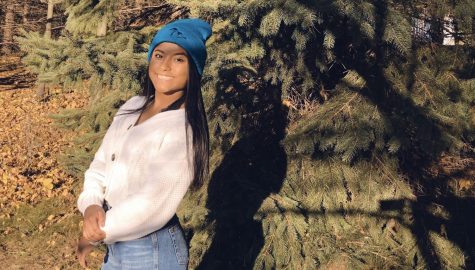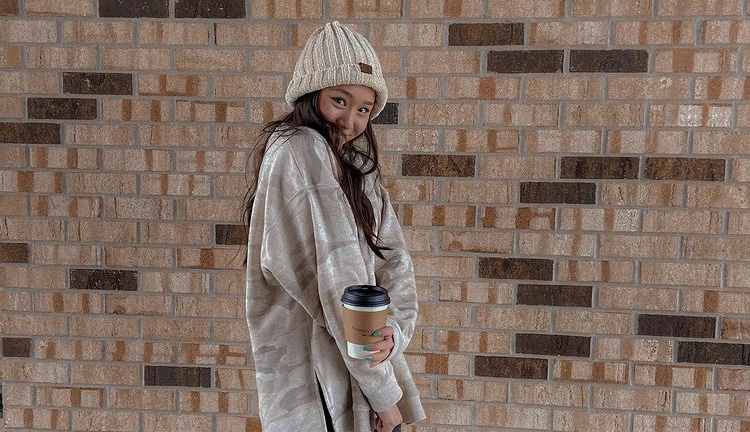Jia Niemeyer’s creative side lies within poetry and art

More stories from Angelina Keeler
Poetry and art make for a splendid combination according to freshman Jia Niemeyer.
Jia finds herself linking these two interests in every piece she draws or writes.
“I think art and poetry are similar,” Jia said. “They’re both forms of self-expression, [and] I think that’s important, especially because you can paint a picture for others. It’s very interpretive depending on who [is] looking at it.”
While Jia mixes art and poetry, she was not always interested in these hobbies. Her half-hearted passion for art and poetry took a turn for the better in elementary school.
Initially, Jia struggled with enjoying the gift that was secretly held inside of her, but from the encouragement of loved ones, she was able to open up—exposing her creative side to the drawing world, and she hasn’t looked back since.
“My dad and aunt always encouraged me to do art,” Jia said. “They’d supply me with the materials I needed. That allowed me to feel confident [despite messing up] and try new things without feeling like I have to be perfect or [worry] that I’d run out of things to use and not have anything.”
Jia got right to work from a ripe age and grew as an artist. She never knew how much she enjoyed drawing until she found herself sitting at a table with a pencil and paper for long periods of time.
“The biggest project that took the longest [was] probably my George Floyd painting,” Jia said. “I painted George Floyd on the back of a jean jacket; that one took a long time for me because I don’t often do portraits. I also tried a new style with that [piece], which was fun.”
Though the spark wasn’t always present when brainstorming what to draw, Jia grew to love the freedom it allowed her. As for poetry, it managed to touch her emotionally, and she grew to love it.
“I love writing poetry,” Jia said. “It’s one of the [activities] I am very passionate about it.”
While some poets write about their emotions, Jia feels that it goes much deeper than feelings in the actual writings themselves. Self-improvement has been—and will continue to be—the main focus for her, as all she wants to do is become the best poet she can be.
“I have grown so much as a poet,” Jia said. “I am continuing to by exposing myself to different poetry styles and different poets, [as well as] reading in general. When I read, I am learning new vocabulary and different ways of phrasing [words], which is important in poetry, especially the type that I like to do. Saying [words] in a small [amount] and being very concise to get the point across is key.”
Constructing poems may come across as difficult to some, but Jia finds pure enjoyment in experimenting with different phrases and word choices. She may not turn to poetry when she feels like spilling her emotions out but does so to simply fill in gaps for falling pieces.
“Quite frankly, I don’t feel the emotions in my poetry, or at least as much as I convey them,” Jia said. “I typically like to write in someone else’s perspective by putting myself in someone else’s shoes, [for example], a character from a movie. I [also] like to write more about heartaches or heavy topics.”
Jia loves how she can put herself in other people’s perspectives. She overall loves the everlasting connection between her and poetry.
“I think one of the reasons why I like poetry so much is the emotions that come with it,” Jia said. “[Poetry] is super interpretive, and you can read the same [words] months later and feel something completely different than what you initially felt. I like to read it to gain [the] different perspectives of others.”
To be an exceptional poet, having a connection with poetry isn’t the only necessity; practice is key to ensure a smooth-flowing story. Poetry is odd and unique and must have that spark for others reading it. Jia knows that multiple outlooks from situations can help her sprout into the poet she dreams of becoming.
While growing as a poet may take more practice than imagined, Jia turns to the resources that are provided for her and takes full advantage of the new ideas technology and social media bring.
“I keep a notes tab on my phone,” Jia said. “[I expand most of my writing through there]. I have tons of poems in [my notes tab], so I put some of my favorites on my Instagram story and keep those as a highlight, so people [can] view those and that’s fun.”
As Jia grows and finds inspiration on social media, she also finds it in many other poets as well. Poetry has challenged Jia in many ways, but she always overcomes the hardships it brings.
Running into writer’s block may be a common issue, so Jia has many solutions to fix this roadblock immediately. When the words on the paper start to fade away, she looks to the inspirational poets she has learned from in the world of writing.
“There [are] a lot of poets that inspire me,” Jia said. “I remember some of the slam poems that brought me into poetry in the first place: Bruises by Levi Todd, Rudy Francisco’s poems, Healing by Nayo Jones, and a lot of Sarah Kays. Many of these are very powerful, and these are all people that continue to inspire me, but I’d say [they are] more popular, so they were at the forefront, and that’s what kind of brought me into this world.”
Overall, Jia is beyond grateful to have family and friends that continue to push her to become a better poet and artist.
“A lot of people helped form me into a better artist and poet without them knowing and without me even knowing,” Jia said. “I think poetry is a great way to express and share people’s outlooks on [situations,] it is a great way to learn and get advice.”

Angelina Keeler is a junior entering her first year on staff for The Central Trend. She loves to spend time with family and friends and enjoys reading...

























































































